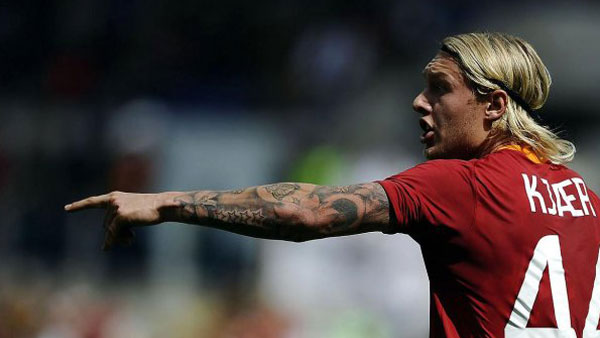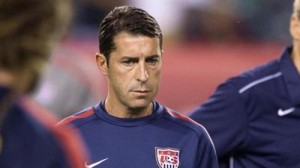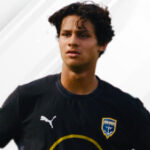Getting it right: Why “talent selection” doesn’t work well enough

 In 2004, FC Midtjylland in Denmark set out to establish Scandinavia’s first youth soccer academy. As a new club, it did not have the pick of the litter of Danish soccer talent, which went to bigger, far more established clubs. And as the coaches put together their first team, they were short one player.
In 2004, FC Midtjylland in Denmark set out to establish Scandinavia’s first youth soccer academy. As a new club, it did not have the pick of the litter of Danish soccer talent, which went to bigger, far more established clubs. And as the coaches put together their first team, they were short one player.
With the season about to start, the coaches still could not fill that elusive final spot on the roster. They settled on a player none of them wanted, the son of the club’s materials manager, on the condition that he pay his own way to play.
According to one of the coaches, Rasmus Ankerson, who tells this fascinating story in his great book Gold Mine Effect: Crack the Secrets of High Performance, they selected the boy more to ensure that his father would not quit his job than the inkling that he had a future in the game.
In 2010, that last boy picked, Simon Kjaer (pictured above), was a starting center back in Denmark’s first game of the 2010 World Cup in South Africa against the Netherlands. Since 2004, he has appeared 30 times for Denmark, and played club soccer for Palermo and Roma in Italy, Wolfsburg in Germany, and currently plays for Lille in France. Not too shabby for the kid no one wanted at age 15.
Six months after Simon Kjaer took the last roster spot at FC Midtjylland, the club director collected the eight staff coaches in a room, and handed them all a piece of paper. They were asked to list the five current players (out of 16 on the roster) most likely to advance the furthest in the next five years. The results were then sealed in an envelope and locked away.
Five years later, shortly after Kjaer was sold to Palermo for a tidy $6 million transfer fee, those results were opened. Not a single one of the highly qualified, UEFA “A” Licensed coaches even had Kjaer on his list!
I recently wrote about our obsession with selecting talent instead of identifying it. Many parents, coaches and soccer fans have asked “What can we do about this?”
We have seen firsthand our obsession with winning, which forces us to select the biggest, fastest kids at young ages to win now, instead of identifying kids that might evolve into future elite players. Why do we do this? Because, as the case of Simon Kjaer points out, talent identification is really, really hard!
Highly trained, professional coaches cannot say with certainty who will make it and who will not, even at 15 years old, as the Kjaer story points out. In our country, more often than not lightly-trained, part-time coaches are making that decision, usually at 8 to 10 years old!
This is insane!
This is killing soccer in our country.
We are culling our potential future talent pool based upon relative age of players (age compared to the arbitrary calendar cutoff), which usually leads to the selection of bigger, faster and slightly older players at the expense of younger, smaller, and often more technical ones, who are just not aggressive enough, fast enough, strong enough to help a team win the Under-11 State Cup.
But we have to win the U11-13 State Cup, we are told, because our best players will leave if we don’t. We need to have the best players when we join the U.S. Soccer Development Academy at U-14. And we need to have the best players in our academy program, so our club gets recognition, sponsors, and plays for the academy championship. It would be nice to develop kids, but we have to win! This is American youth soccer in a nutshell.
[ +Our Biggest Mistake: Talent selection instead of talent ID ]
We are taking all the young soccer players in the U.S., and putting them in the proverbial tube of toothpaste, and then squeezing out a few through the narrow opening, and calling them elite. If we were doing this at age 16-18, I’d say OK, but we are doing it at 10 years old, sometimes younger. These elite 10-year-olds are then given better coaches, better facilities, increased travel, asked to specialize and trained like future pros.
But what about the rest of the kids in the tube of toothpaste? What about the Simon Kjaers?
They are cut, put on lesser teams, with less experienced coaches, in weaker leagues, and every once in a while one kid perseveres and makes it back to the elite level. Most just wither away, play other sports, or just quit.
And the elite ones? They train, but as physical differences mitigate, many elite 11-year-olds fade away, supplanted by weaker 11-year-olds who develop better physically, are more technical, coachable and sensitive to training and have more grit, because they were forced from a young age to fight a little harder then the big stars of pre-pubescent soccer.
 As the young stars fade away, they have to be replaced by the best players from other clubs, for many clubs have not developed their own talent sufficiently to replace these kids.
As the young stars fade away, they have to be replaced by the best players from other clubs, for many clubs have not developed their own talent sufficiently to replace these kids.
I have been told by USSDA clubs that they have an 80-90 percent player turnover rate on their top team between U-11 and U-18. I know of a USSDA U18 national champion that had five players in its starting lineup for the final who only joined the club that year (I know because I coached those five when they were younger in another club).
Are we talent collectors, or talent developers?
The fact is, no one can accurately predict and identify future talent prior to puberty. Yes, some are better at it than others, but whenever I ask a room of coaches, “Have you ever had a player who developed so fast that you never saw it coming, and he surpassed all your expectations?” everyone raises their hand! Let’s face it, we all miss kids!
And that’s OK, as long as we stop culling players at young ages, and taking those kids we missed off the player development track.
We need to admit that even the best of us cannot predict and identify future talent.
And if we admit this, then what logically follows is the need to start developing the masses of players. We need to focus on grassroots soccer. We need our best coaches working with younger players. And we need to keep as many players as possible involved in the developmental tract that may eventually lead to the Development Academy, and to the pros or college.
I was relieved when the USSF recently appointed Tab Ramos to the Youth Technical Director position, for he has been both a player and coach who emphasizes the technical aspects of the game. Thankfully, upon his appointment, one of his first statements was “We need to focus on the root of the game. There continues to be nationwide a reliance on results rather than development at the younger ages. In particular, Zone 1 is an age group where there continues to be too much travel. There continues to be too much focus on the competition without attention on the individual player.”
 Thank you Tab Ramos, for bringing this vision to our youngest ages. It is sorely needed. Only time will tell whether he has the support and resources to accomplish this. He needs all the help he can get.
Thank you Tab Ramos, for bringing this vision to our youngest ages. It is sorely needed. Only time will tell whether he has the support and resources to accomplish this. He needs all the help he can get.
How can parents and coaches help him achieve this? What is the model of a successful 21st-century youth soccer club? Here are a few ideas for our Zone 1-2 kids (U-6 to U-12):
- Focus the vast majority of time on technical development, especially comfort on the ball, with as many players as possible through U-12. Don’t just say it, do it! In my experience technical players figure out the small group tactics pretty quickly, and tactical players without technique do not make it very far. Have you ever heard a pro coach say “that player is brilliant in tight spaces, touch, vision, the whole package, but give him space and time and he is a disaster?” Of course not,
- Identify your weaker technical players and give them the best coaching, helping them catch up to the strong ones to build deeper player pools. We need three times as many high school-age players who are competently trained and technically proficient in order to compete on the world stage.
- Through U-12, keep no standings, play for no state championships. Instill a love of the game, and let the games belong to the kids. Let them fail, let them figure out how to solve problems instead of solving them for them (that means you too, parents). Give them the game!
- Play small-sided games! Research demonstrates that 4v4, 7v7 and 9v9 are more enjoyable for young players. They get more touches, complete more passes, score more goals and have more success then in 11v11 games. As for those state and national organizations who sanction 11v11 play for 10-year-olds (you know who you are) start serving the kids and play small-sided soccer!
- EDUCATION for coaches! We have a ton of licensed “professional” coaches who know little about child development, child psychology, and effective educational tools. We need to provide more avenues for learning, as well as environments where they are allowed to develop players instead of focusing on winning to keep their jobs and parents off their backs.
- EDUCATION for parents! Yelling constant instructions from the sideline, pushing your kids to your own goals instead of theirs, harassing them on the ride home after games, and inadvertently or not, tying your love of your kids to their sporting outcomes is ruining a generation of young athletes. Yes, its the norm, but it is completely wrong! When parents sign a kid up for youth soccer, they, too, should be enrolled in ongoing education. We need to teach parents how to help, instead of telling them to step aside and leave it to the pros. Most parents want to help, and need the resources provided so they know how, yet few if any clubs do this on an ongoing basis. (I founded the Changing the Game Project to change this.)
If we admit that we will never be able to identify all the future talent, then we MUST STOP TRYING TO DO SO at the youngest ages.
Instead, let’s sign up and develop more kids!
Let’s train them all for a few extra years!
Let’s educate our coaches and parents so that they become the players’ allies, and not their adversaries.
Let’s emphasize the youth in “Youth sports.”
And next time you are about to cut a kid, or have decided that he or she has stopped developing and needs to be let go…
…Remember Simon Kjaer, and get back to teaching!
SOCCERWIRE MARKETPLACE
- Start the Season Strong at Loudoun Premier Cup!
- 50th Annual Rael Vodicka Memorial Tournament
- OFFICIAL FC BAYERN CLINIC - MIAMI
- Soccer Marketing Internships at The St. James FC
- Job Opening: The St. James FC Goalkeeper Academy Coach
- Full-Time Director of Goalkeeping for The St. James FC
- visitRaleigh.com Showcase Series 2025, hosted by NCFC Youth
- OFFICIAL MANCHESTER CITY SOCCER CAMPS
- Join Official Elite Summer Soccer Camps with Europe’s Top Pro Clubs!
- OFFICIAL BAYERN MUNICH SUMMER CAMPS U.S.












